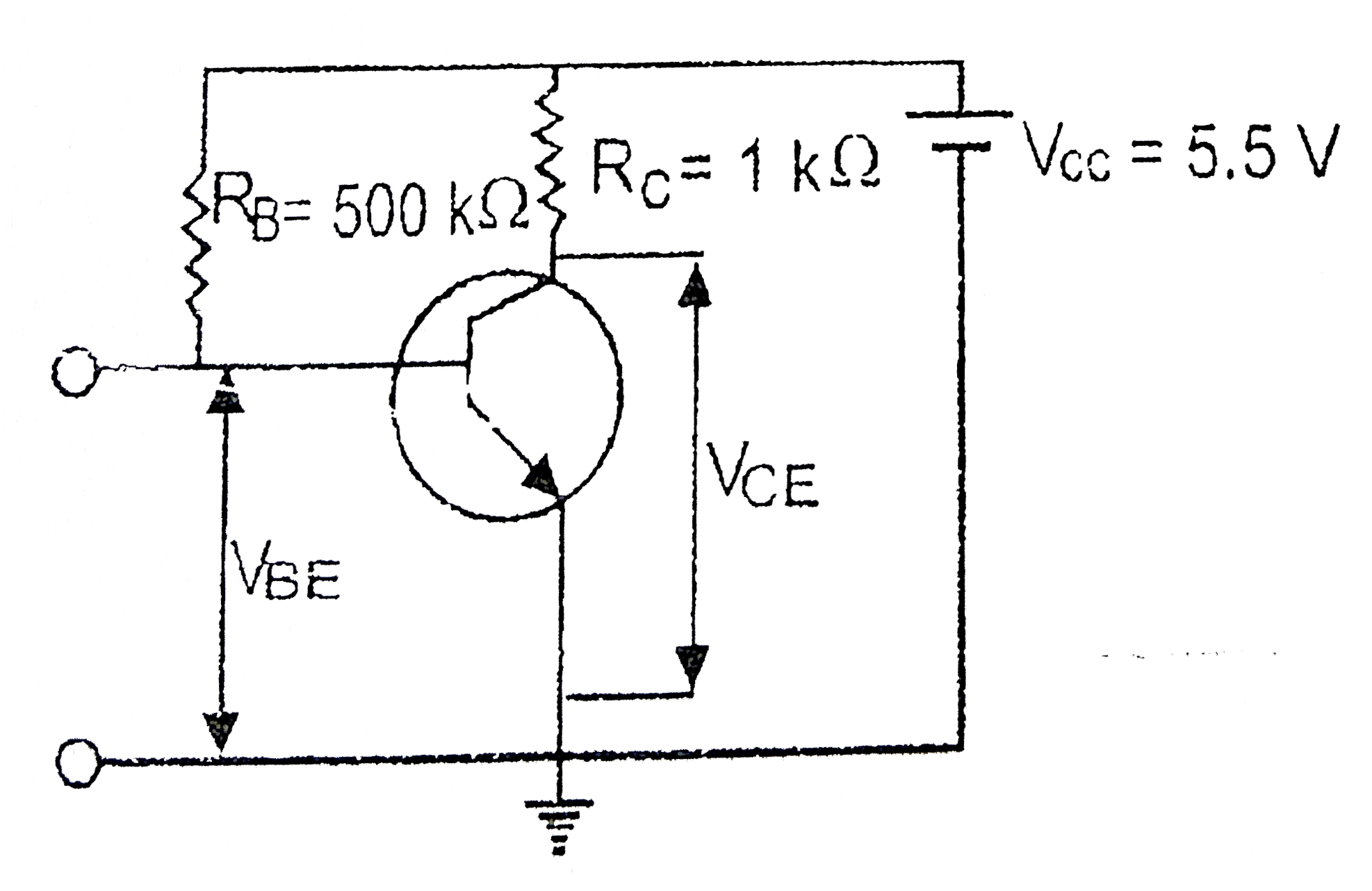In a common base configuration, with a base current of 0.005 mA, the emitter current is I mA. Calculate the value of collector current.
To solve the problem of finding the collector current (IC) in a common base configuration given the base current (IB) and emitter current (IE), we can follow these steps:
1. Identify the Given Values:
- Base current (IB) = 0.005 mA
- Emitter current (IE) = 1 mA
2. Use the Relationship Between Currents:
In a common base configuration, the relationship between the emitter current (IE), base current (IB), and collector current (IC) is given by the equation:
IE=IB+IC
This means that the emitter current is equal to the sum of the base current and the collector current.
3. Rearrange the Equation to Solve for Collector Current (IC):
We can rearrange the equation to find the collector current:
IC=IE−IB
4. Substitute the Given Values into the Equation:
Now, substitute the values of IE and IB into the equation:
IC=1mA−0.005mA
5. Perform the Calculation:
IC=1mA−0.005mA=0.995mA
6. Final Answer:
Thus, the collector current (IC) is:
IC=0.995mA
Summary of the Solution:
The collector current (IC) in the common base configuration is 0.995 mA.
- Base current (IB) = 0.005 mA
- Emitter current (IE) = 1 mA
In a common base configuration, the relationship between the emitter current (IE), base current (IB), and collector current (IC) is given by the equation:
IE=IB+IC
This means that the emitter current is equal to the sum of the base current and the collector current.
We can rearrange the equation to find the collector current:
IC=IE−IB
Now, substitute the values of IE and IB into the equation:
IC=1mA−0.005mA
IC=1mA−0.005mA=0.995mA
Thus, the collector current (IC) is:
IC=0.995mA
The collector current (IC) in the common base configuration is 0.995 mA.
Topper's Solved these Questions
- BOOK - AAKASH SERIESCHAPTER - SEMICONDUCTOR DEVICESEXERCISE - Problems (LEVEL-II)9videos
SEMICONDUCTOR DEVICES
- BOOK - AAKASH SERIESCHAPTER - SEMICONDUCTOR DEVICESEXERCISE - EXAMPLES56videos
SEMICONDUCTOR DEVICES
- BOOK - AAKASH SERIESCHAPTER - SEMICONDUCTOR DEVICESEXERCISE - Exercise (very Short answer questions)36videos
SEMICONDUCTOR DEVICES
- BOOK - AAKASH SERIESCHAPTER - RAY OPTICSEXERCISE - PROBLEMS ( LEVEL-II)60videos
RAY OPTICS
- BOOK - AAKASH SERIESCHAPTER - UNITS AND MEASUREMENTEXERCISE - PRACTICE EXERCISE45videos
UNITS AND MEASUREMENT
Similar Questions

(a) For given transistor circuit, the base current is 10μA and the collector current is 5.2 mA. Can this transistor circuit be used as an amplifier. Your answer must be supported with proper explanation.
(b). For a common emitter amplifier, current gain is 69. if the emitter current is 7 mA then calculate the base current and collector current.View SolutionIn a common base transistor circuit, the current gain is 0.98. On changing the emitter current by 1 mA, the change in collector current is
View SolutionIn a common base transistor circuit, the current gain is 0.98. On changing the emitter current by 5.00 mA, the change in collector current is
View SolutionIn a common base mode of a transition , the collector current is 5.488mA for an emitter currect of 5.60mA . The value of the base current amplification factor (β) will be
View SolutionThe current gain β=100 and base current is 25μA . Calculate emitter current.
View SolutionIn a common emitter configuration base current is 40μA and current gian is 100. The collector current will be
View SolutionIn common - emitter configuration of a transistor, the base current IE=2μA,α=0.9 then the value of IC is
View SolutionThe frequency of oscillation of current in the indcutor is
 View Solution
View SolutionIn a transistor the current amplification α is '0.9', when connected in common base configuration. Now if the same transistor is connected in common emitter configurations and the change in ouput current is 4.5 mA, then the corresponding charnge in the input current is
View SolutionAssertion : In common base configuration, the current gain of the transistor is less than unity.
Reason : The collector terminal is revers biased for amplification.View Solution

